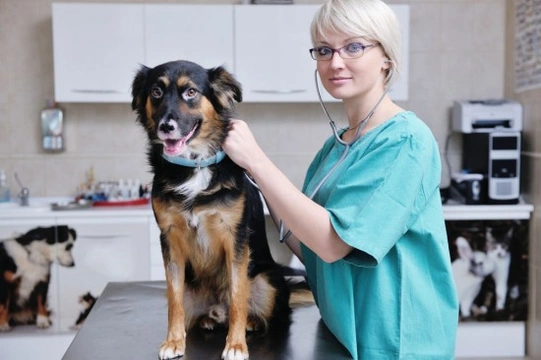
Colitis in dogs - Symptoms and Treatment
The term “colitis” refers to an inflammation of the colon, and is a condition that can affect many different animals, including people- and dogs. Colitis is considered to be a digestive disease, and can either be slow to develop and persistent (chronic) or acute, meaning that it flares up quickly and may be prone to recurrences.
Colitis in dogs, much as in people, can be painful and uncomfortable, and can be a forerunner to inflammatory bowel disease as well as often accompanying that condition. Do you know the signs and symptoms of colitis in dogs, how the condition is treated and what you can do to help to minimise the chances of your dog developing it? Read on to learn more about colitis in dogs.
What is colitis?
The condition called colitis occurs when the colon (sometimes known as the large intestine) becomes inflamed, which leads to the disruption of the normal cellular construction of the colon and the accumulation of inflammatory cytokines or protein molecules, which serve to further exacerbate the condition. This can lead to a range of problems including pain and discomfort, diarrhoea, and trouble passing stools.
What causes colitis?
There are various potential causes of colitis in dogs, and one of the most commonly known triggers is stress; however stress in and of itself does not lead to the condition developing, but rather, places additional pressure on the body’s normal systems and functions, giving colitis the opportunity to flare up in dogs that are prone to the condition.
Underlying causes for colitis in dogs can include:
- IBS/irritable bowel syndrome (more information on this condition is available here)
- Whipworms or other intestinal worms
- Fungal infections (although this is rare)
- Food allergies
- Exposure to harmful strains of algae, although again this is rare
- Various other gastro-intestinal conditions and infections, such as salmonella or giardia
- Trauma or injury to the colon due to external factors
- Eating an inappropriate diet or eating something that is unsuitable for dogs
Minimising the chances of your dog contracting colitis
In order to do what you can to prevent your dog from contracting colitis in the first place, there are various steps that you can take. None of these are foolproof, and if colitis occurs due to another condition such as IBS, then treatment of the underlying condition will be necessary to resolve the bout of colitis.
- Ensure that your dog is wormed regularly using a good quality worming product recommended by your vet
- Try to keep your dog’s stress levels to a minimum to avoid flare-ups
- Ensure that your dog is fed a balanced diet and does not scavenge or eat foodstuffs that they are not supposed to
- Keep your dog from eating anything that he shouldn’t eat when out on walks
- Avoid making sudden changes to your dog’s diet
The symptoms of colitis in dogs
Be on the lookout for several of these common colitis symptoms in various combinations:
- Watery diarrhoea, particularly if there is blood in it
- Bright flecks of blood in the stools
- Soft faeces
- Frequent need to go to the toilet, passing small amounts of poop that appear different to your dog’s usual productions
- Pain when defecating
- Straining to pass stools, which can sometimes be mistaken for constipation
- Lack of appetite or disinterest in food
- Frequent flatulence
- Weight loss
- Pronounced squatting and hunching when passing stools
- Pain or inflammation of the lower body and possible cramps
Diagnosing colitis
Your vet will perform a physical examination on your dog, taking into account their general health and veterinary history. They may ask you to acquire a stool sample from your dog, to test for worm count and the presence of parasites. X-ray or ultrasound scanning may be performed in some cases, as may taking a biopsy of the colon itself or a colonoscopy.
Treatment and prognosis
There are various different ways to approach the treatment of colitis, depending on the suspected underlying causes of it and its severity. Initially your dog will usually be placed on a fast for a day or two, before beginning to re-introduce a diet that is high in fibre or specifically intended to treat dogs with food allergies.
Broad-spectrum antibiotics may be used to treat the cause of any underlying infection leading to colitis in your dog. Administering a worming treatment is also commonly used as part of the wider treatment regime for colitis in dogs, to remove any whipworms present in the intestine that can cause or exacerbate colitis.
Most of these treatment methods can be performed on an outpatient basis, but if the dog is very ill or has been suffering from the condition for a long time, inpatient monitoring and IV fluid therapy may be required. If parts of the colon have become badly damaged by the inflammation, surgical intervention to remove and reconstruct sections of the colon may be indicated, although this is relatively rare.
After treatment, the prognosis for dogs is generally good to excellent, and while the condition can be painful and debilitating, it is also normally very treatable. It is important to note that colitis can flare up repeatedly in some dogs that are prone to the condition, and you should make an extra effort to keep an eye on your dog’s general health and wellbeing in the future after they have been diagnosed and treated for an initial attack.



